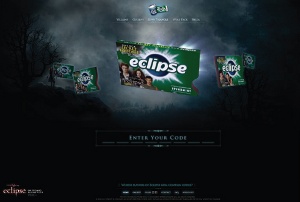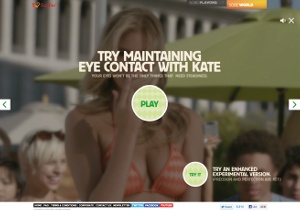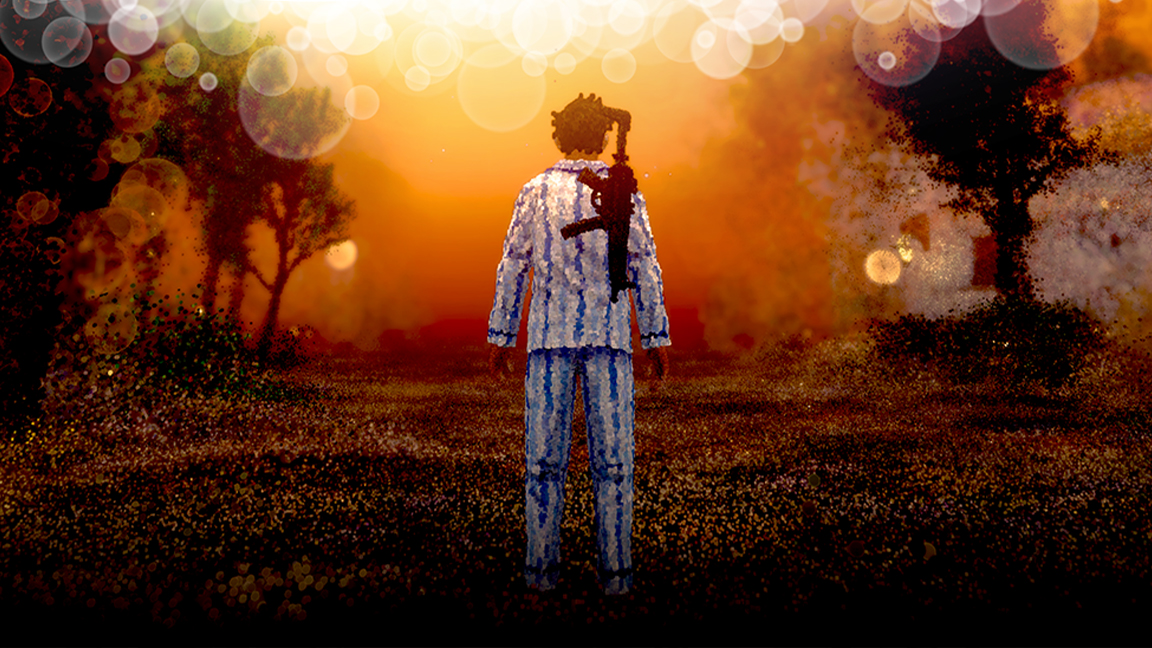magneticNorth and Beep Industries: Addicted to challenge
With an unquenchable thirst for innovation, magneticNorth and Beep Industries combine a strong collaborative spirit with genuine creative curiosity to push boundaries time after time. Read the interview and then watch our Studio Life documentary
Brendan Dawes and Lou Cordwell
Joint founders of both
and new start-up
, Dawes and Cordwell came together from totally different backgrounds – “playing with computers” and advertising respectively. When the internet got exciting, they couldn’t find anyone exciting enough to work for – and mN was born.
“We design for people, not machines,” begins Brendan Dawes, creative director and co-founder of renowned digital design studio magneticNorth, as well as of Beep Industries – a fresh start-up that creates products to do one thing really well. “We try to make things as simple as they can be, but no simpler,” he adds. “Our style feels very warm; not ‘trendy’ – we’re our own kind of people.”
It’s an appealing philosophy that applies equally to magneticNorth’s tirelessly innovative, engaging digital projects as it does to Beep’s tactile, personality-packed product designs, which include two Apple accessories: the MoviePeg iPhone and iPad stand; and recently the POPA – an ingenious attachment that gives your iPhone a big, red camera button. User experience sits at the core of both companies’ design processes, and the bar is set high for every project they undertake.
“We have a diverse client base, but if you put all our clients in one room, they’re all similar: they’re looking for something that hasn’t been done before,” reflects Lou Cordwell, co-founder of both magneticNorth and Beep, who began her career working in traditional ad agencies but dived headfirst into digital just as it became interesting. “They want something original,” she shrugs.
To deliver that spark of originality, magneticNorth prefers to maintain a fruitful two-way relationship with all of its clients, which ultimately helps to fuel the creative process – and it’s rather selective about who it works with as a result.

“We’re very collaborative: some clients can deal with that, but others can’t,” admits Cordwell, who adds that long-term collaborator the BBC totally ‘gets’ the studio’s approach: “We get on well,” she confirms. “We don’t like to just receive a brief and then deliver something six months later. There’s always a core idea that we pitch with, but it’s difficult to break down the process from that point onwards – we often can’t attribute one person to the final idea.”
While it takes a certain breed of open-minded client to work with magneticNorth, it also takes a certain type of designer to work at the company. A metaphorical ‘cupboard’ houses all the weird and wonderful creations that Dawes and his fellow curious creatives have developed in their downtime: “Half of it we don’t know what to do with at the time,” he grins, but the cupboard will often be raided for commercial projects further down the line. “Often it’s not what we’ve made; it’s more about the process of working.”
This hands-on and playful approach to technology fed directly into the foundation of Beep Industries, which has a lot of similarities to magneticNorth in terms of design philosophy: “At Beep Industries we have a book of product ideas that we add to all the time,” reveals Dawes. “If you can explain an idea in one sentence, it’s a good idea.”

For Dawes and Cordwell, Beep is also about pushing themselves in new directions: “Many of the things we set out to do with magneticNorth, we’ve done,” reflects Cordwell. “We’re addicted to challenge: we want to invent something from scratch for the adrenaline rush of it. With any of our projects, we’ll always ask: ‘Does it actually move anything on?’”
Accordingly, magneticNorth won’t compromise its working process for anyone: “We don’t have aggressive growth targets, and we’re not driven by the need to take on work,” Cordwell insists. “We’ll openly say no. Sometimes, clients come back years later and say they’re ready to work with us. Other times, we’ll build a relationship with a client: we’ve worked with the BBC for a long time.”
One recent project that Dawes and Cordwell are particularly proud is the ambitious online archive for long-running Radio 4 show Desert Island Discs – a vast repository of seminal records, as selected by the show’s roster of famous guests, which serves as a fascinating cultural barometer throughout its 70-year history. “It’s an iconic brand, and we knew that if we got it right, millions of people would be using it,” says Cordwell. “It was a strange design brief – all about the content – but great design should often be invisible.”

Desert Island Discs was the first in a trio of high profile, music-based projects for the BBC during 2011 – the others being the online home of the world’s largest classical music festival, the BBC Proms, and an interactive installation for the BBC Philharmonic that used a hacked Microsoft Kinect to encourage children to try their hand at conducting, as part of Manchester International Festival in July.
Dawes also believes that magneticNorth’s own site has contributed in no small part to its global reputation: “It’s the most trafficked one we’ve had,” he reveals. “It’s our flag in the ground; a different way to interact with the web. Our website used to change completely every six months, but this one stood the test of time.” The concept is simple enough. You start with a blank screen, and four simple options: draw a circle to reveal a new project; a horizontal line to reveal a news story; a vertical line to search the site; and a diagonal slash through what you’ve done to delete and start again. The Flash-built website might be a few years old now, but, says Dawes, there are still plenty of impressed tweets from people discovering it for the first time – and the studio has been busy developing a dedicated mobile version, as well as experimenting with HTML5 Canvas to push the interaction paradigm in new directions.
“I remember we’d developed a version just before Christmas, and were pleased with it,” Dawes recalls. “Then we came back after the break and thought it was crap; really boring. We sketched out a new idea the same day – just a rough black-and-white prototype – and then tested it on a few people internally.” This hastily sketched concept evolved into the current website design used today.
“The story’s indicative of how we work with clients,” concludes Cordwell. “We’re always pushing ourselves. At the end of the day, if we’re not excited, how will others be? We’re not afraid to rip things up and start again to make something that’s exceptional, and we can’t let things leave the building without being able to shout about them.”

Thank you for reading 5 articles this month* Join now for unlimited access
Enjoy your first month for just £1 / $1 / €1
*Read 5 free articles per month without a subscription

Join now for unlimited access
Try first month for just £1 / $1 / €1
Get the Creative Bloq Newsletter
Daily design news, reviews, how-tos and more, as picked by the editors.

The Creative Bloq team is made up of a group of art and design enthusiasts, and has changed and evolved since Creative Bloq began back in 2012. The current website team consists of eight full-time members of staff: Editor Georgia Coggan, Deputy Editor Rosie Hilder, Ecommerce Editor Beren Neale, Senior News Editor Daniel Piper, Editor, Digital Art and 3D Ian Dean, Tech Reviews Editor Erlingur Einarsson, Ecommerce Writer Beth Nicholls and Staff Writer Natalie Fear, as well as a roster of freelancers from around the world. The ImagineFX magazine team also pitch in, ensuring that content from leading digital art publication ImagineFX is represented on Creative Bloq.
